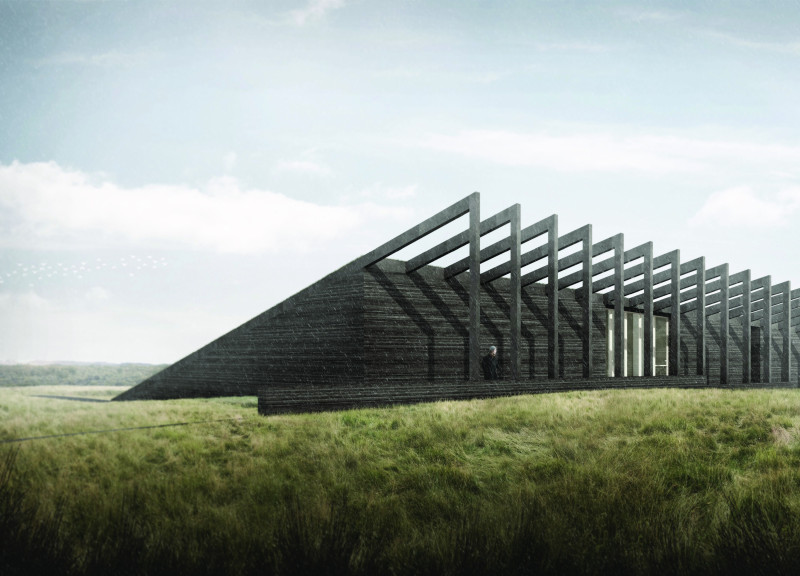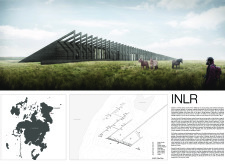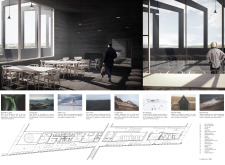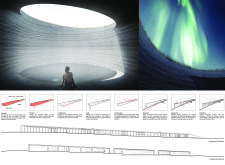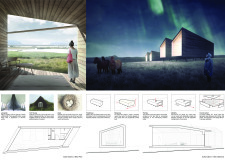5 key facts about this project
## Overview
Situated in Iceland, the INLR project draws inspiration from the region’s dramatic landscapes and unique geological features, particularly the Northern Lights (Aurora Borealis). The design intent focuses on harmonizing architectural elements with the natural environment, promoting a sensory experience that aligns with the surrounding setting. Sustainability is a guiding principle, aiming for a self-sufficient design that minimizes ecological impact and enhances the user experience.
## Materiality and Design Strategy
The project's material palette is reflective of local traditions and landscapes, featuring dark timber to echo the region’s vernacular architecture, along with concrete for structural integrity and modernity. Large glass windows are strategically incorporated to frame breathtaking views, while stone elements reference the geological formations intrinsic to Iceland's identity. These materials serve not only structural purposes but also foster aesthetic connections between the interior and exterior environments.
Architectural features include a main structure characterized by elongated, sloping roofs that mimic the site's natural ridges. The Longhouse, inspired by traditional Icelandic communal living, serves as a central gathering space equipped with large apertures for natural light and landscape views. Guest cabins are positioned for privacy and engagement with nature, echoing traditional turf housing designs through modular wooden exteriors. Additionally, smaller sanctuaries promote personal reflection and observation of the sky, employing circular forms that invite moments of tranquility.
## Integration of Landscape
The outdoor landscape design incorporates stepped terraces for outdoor activities and social interactions, allowing users to engage with expansive views. Water features are strategically integrated to enhance the site's calming auditory experience, providing a reflective natural soundscape. The thoughtful interplay of architecture and landscape throughout the project reflects a dedication to sustainability and cultural resonance while fostering a profound connection with the environment.


